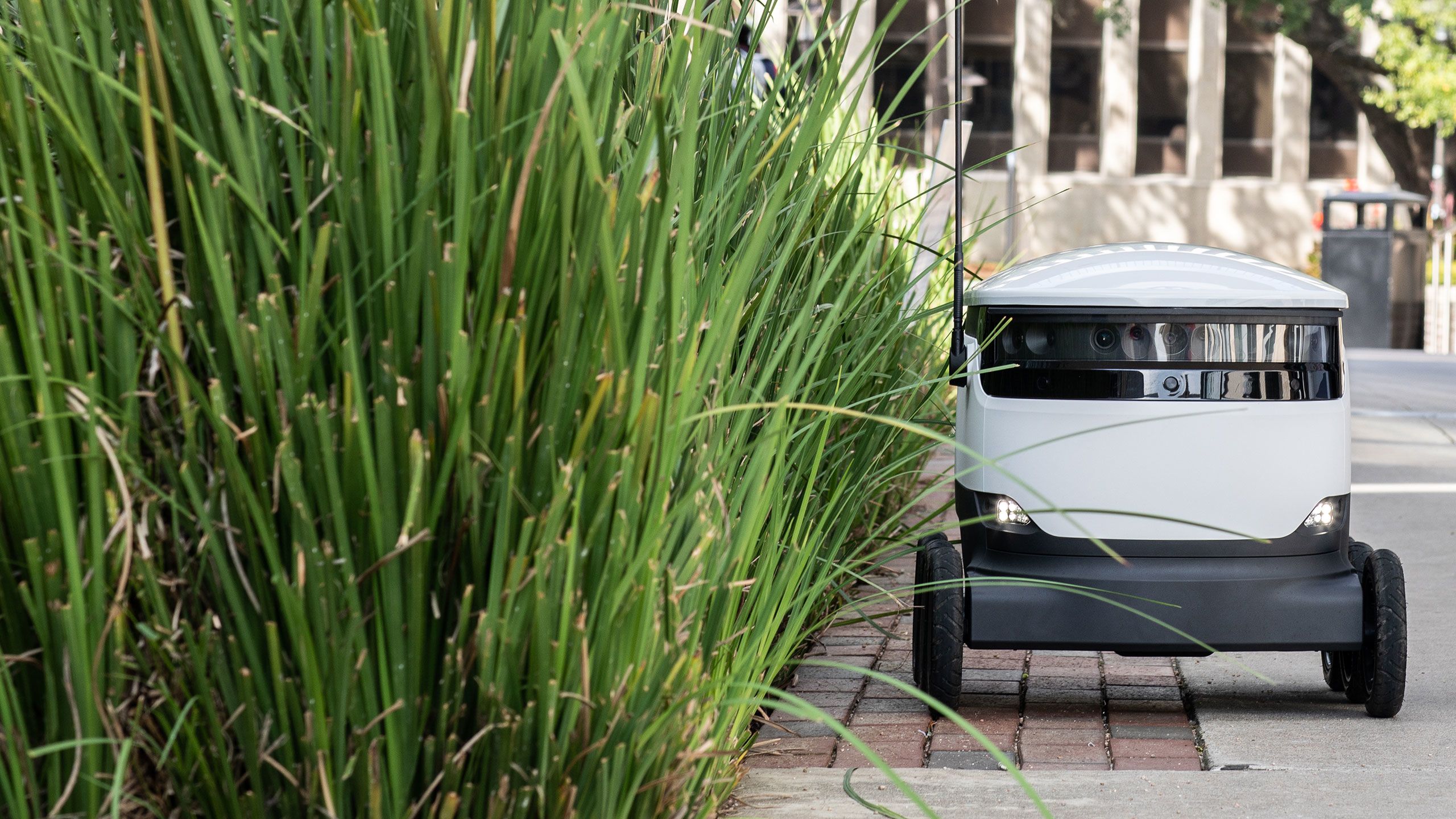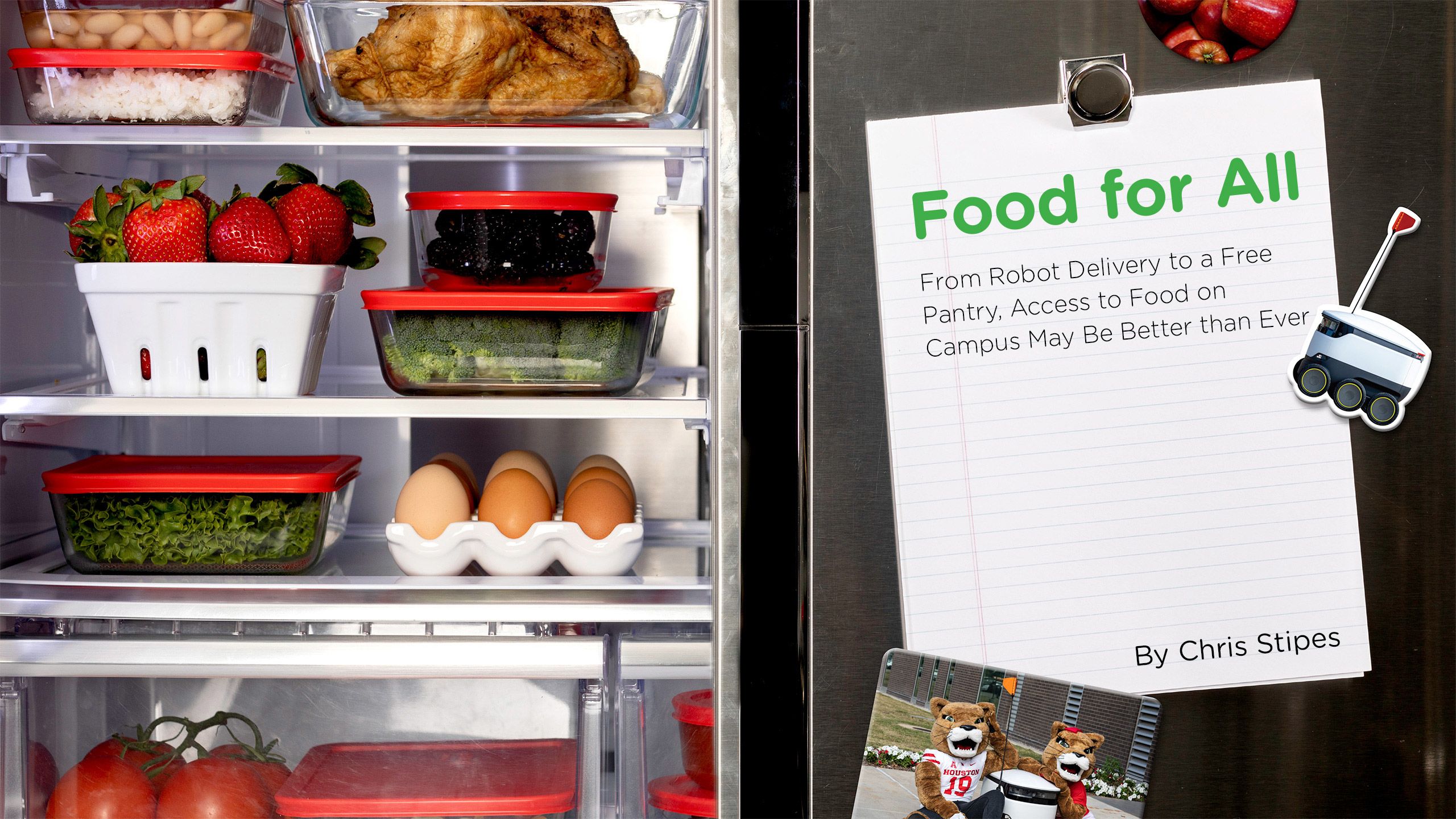
succulent, five-layer burrito from Taco Bell … onions, cheese, tangy red sauce and savory meat …
Oh, how Michael Olle yearned for that qu intuple stack of rich, beefy goodness for lunch. One problem. Michael and his friends were at UH’s Student Center South — which, of course, has an abundant line-up of tasty dining options, but not Taco Bell. That’s located across campus at the Student Center Satellite.
“A couple of soft tacos would be awfully nice, too,” he thought.
In a decision that, perhaps, placed the sophomore economics major on the list of accomplished University of Houston innovators and problem-solvers (OK, possibly an exaggeration), Michael whipped out his smartphone, downloaded the Starship Deliveries app and ordered that beguiling burrito — and those tempting tacos, too — to be delivered by … wait for it … a six-wheeled robot. Just 14 minutes later, his meal arrived. Not too shabby for a machine with a maximum speed of four miles per hour.
“It’s just really cool,” he said. “I didn’t expect delivery robots to be part of my college experience, but I’m glad they are.” Michael’s order was one of more than 2,500 placed by students, faculty and staff in the first week of having the innovative service on campus.
Robot Revolution
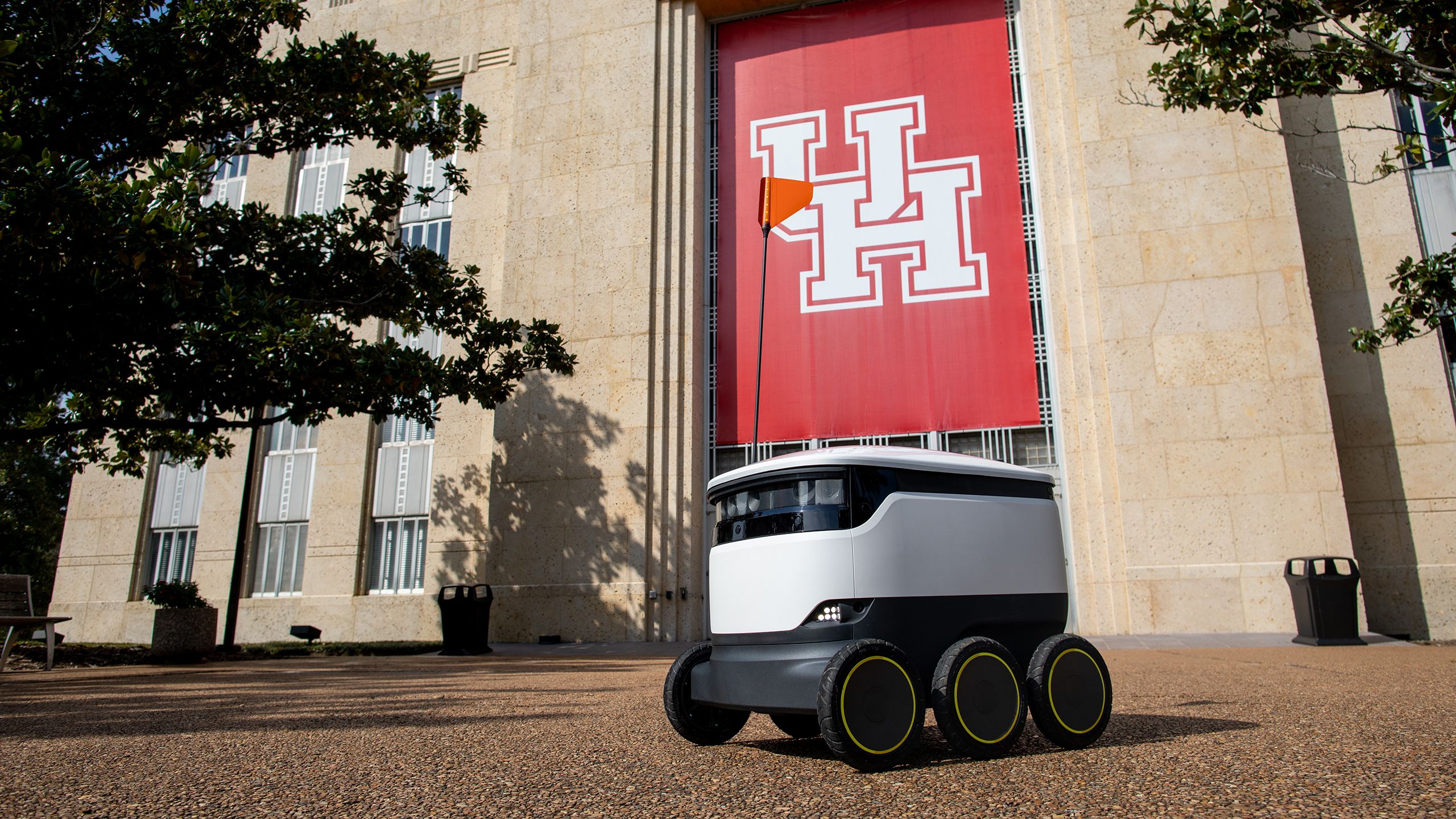
In partnership with Chartwells Higher Education, UH became the first institution of higher education in the state of Texas — and only the sixth in the nation — to offer robotic food deliveries when a fleet of 30 Starship autonomous robots was deployed in November. The high-tech service is paid for by the customer through a $1.99 delivery fee, and payment is made via credit, debit or Cougar Cash cards.
Hundreds of orders are now being filled daily by UH Dining’s “Bot Squad,” the flesh and blood humans who “run” the food to the robots at designated outdoor pick-up spots all across campus. Yes, they — the humans, that is — even wear “Bot Squad” T-shirts.
“I didn’t expect delivery robots to be part of my college experience, but I’m glad they are.”
The robots seem to have been a rousing success in part because they fill a need — fast chow on a spread out campus — and in part because they’re so novel and endearing.
“It reminds me of R2-D2 from Star Wars. They’re so cute,” said freshman Sadie Garcia, whose lunch was delivered to Cougar Village II on a cold, rainy afternoon. “It’s just so cold, and I didn’t want to leave the residence hall. I just love them.”
After digitally dropping a pin on an interactive map to select the nearest location of delivery, the customer can track the robot’s route across campus in real time. Once it arrives, the user receives an alert, and they unlock the insulated storage compartment through the app. Robots can carry up to 20 lbs. — the equivalent of about three shopping bags of groceries.
Along with frequent looks of shock and awe as the little white “coolers on wheels” traversed campus during those first few weeks following the launch, there were also plenty of pictures and videos posted on social media. UH President Renu Khator tweeted a photo from her Ezekiel Cullen office window saying the students “... find them quite amusing.” Khator was actually the first to introduce the robots to the campus community during her 2019 fall address, when a robot delivered a beverage on stage followed by a “Go Coogs!”
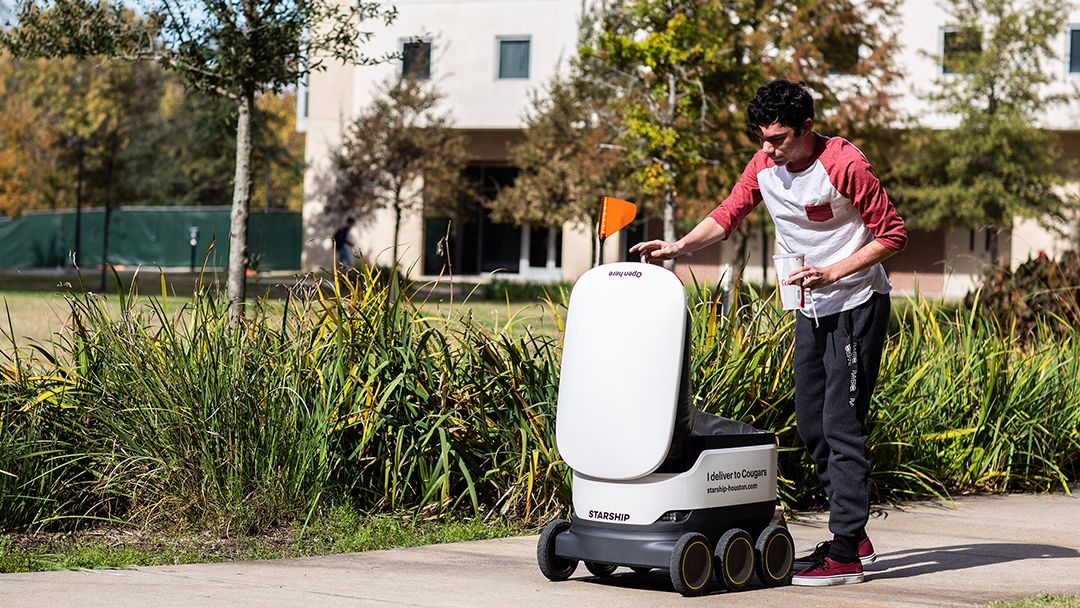
Programmed to be charming and well-mannered, the robots are noticeably friendly, as senior Nicholas Johnson found out. When he discovered a robot that appeared to be stuck along the edge of a sidewalk, he nudged it back on track. When the robot politely replied, “Thank you,” Johnson, as if interacting with a human, automatically responded, “You’re welcome.” His recording of the encounter (because young people record everything these days) went viral on Twitter and has since been viewed millions of times online.
The robots’ arrival at UH has also garnered national media attention from outlets including NBC Nightly News with Lester Holt. No, Lester didn’t come to campus, but correspondent Gadi Schwartz did. He was in awe of the technology and how, just months after their introduction to campus, the students and robots seamlessly co-exist.
The future is now
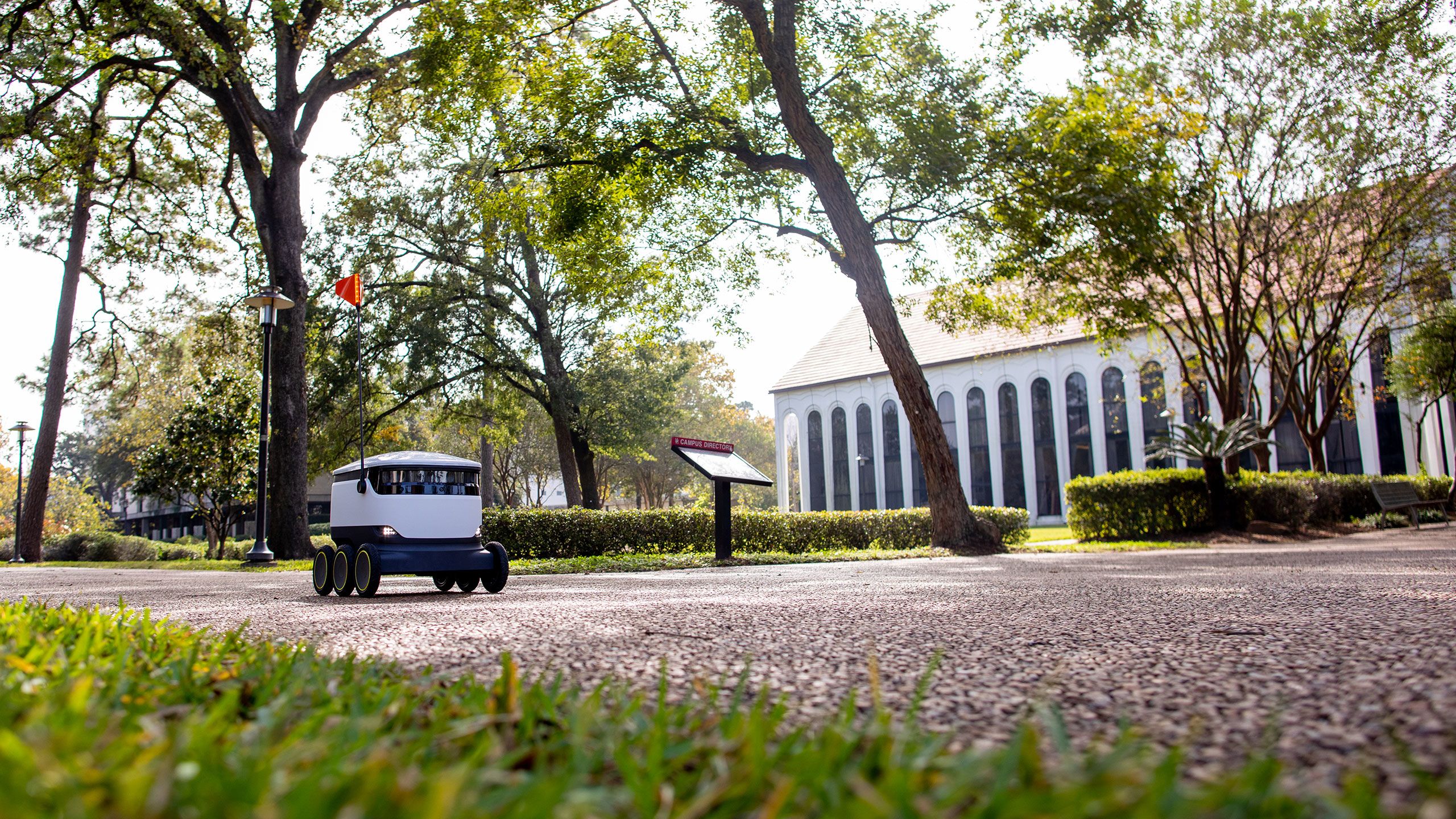
These Starship robots have traveled over 350,000 miles and completed more than 100,000 autonomous deliveries around the world. The robots use a combination of sophisticated machine learning, artificial intelligence and sensors to travel on sidewalks and navigate around obstacles. The computer vision-based navigation helps the robots to map their environment to the nearest inch. The robots can cross streets, climb curbs, travel at night and operate in both rain and snow. A team of humans can also monitor their progress remotely and can take control at a moment’s notice.
“This revolutionary delivery method makes it more convenient for the campus community to take advantage of our diverse dining program from anywhere on campus while expanding the hours of operation,” said Emily Messa, UH associate vice president for administration. “By opening our campus to this innovative service, which is paid for by the customers, the University didn’t have to spend any money purchasing the technology, yet we’ve enhanced our food delivery capabilities.”
Students, faculty and staff now enjoy robot deliveries from more than a dozen UH Dining venues, including Drexler’s, Starbucks, Einstein Bros. Bagels, Panda Express and Cougar Village Market. But the technology also makes it easy to add restaurant concepts very quickly, according to David Riddle, Chartwells district manager. And even accommodate something called a “ghost restaurant,” he said.
“Ghost restaurants allow us to take advantage of excess kitchen capacity on campus to reach more customers and increase service hours,” Riddle explained. Burger 713, for example, doesn’t have a physical location on campus, yet burgers and wings are available for delivery from 9 p.m. to 1 a.m. The food is prepared in various dining venues on campus that are closed for walk-in customers at that time. Cougar Crunch is another “ghost restaurant” recently introduced with a wide array of cereals available for delivery. “It’s a very efficient way to maximize our resources and feed more students,” added Riddle.
Naturally, this futuristic food delivery system is not without a few critics, those who believe it’s self-indulgent and those who argue the robots are taking jobs from humans. But its supporters are quick to point out that the service has actually increased job opportunities for dining employees by increasing service hours, as well as for students who have been hired to service the bots.
“This is insanely cool because I’ve always been interested in technology,” said Tyler Daughtry, an accounting and finance student at Bauer College of Business, who works as a robot operator and field assistant. “This is enhancing my educational experience because I hope to one day work in the tech industry. For UH to go out on a limb and adopt this service is pretty dope.”
Stocking the Cupboard
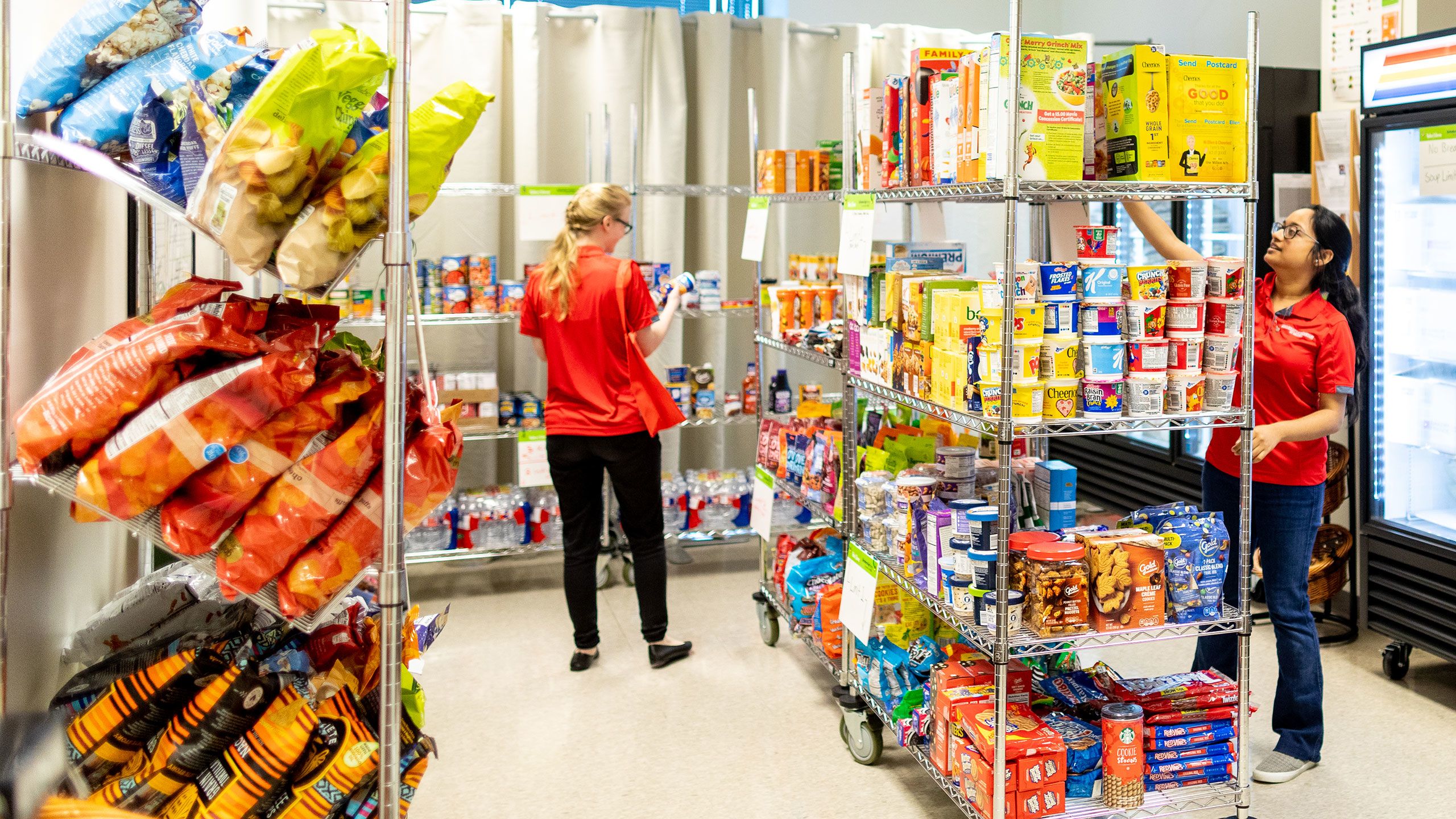
While robotic food delivery is a luxury service, and quite popular, the University recognizes not all students are in a financial position to take advantage. College students have enough to worry about paying for textbooks, tuition, transportation and supplies, let alone delivery fees. For some, those expenses can even take precedence over food. Food insecurity — or the inability to afford enough nutritious food to fuel a regularly healthy lifestyle — is a growing concern on college campuses nationwide.
Jessica, a UH junior double-majoring in history and applied linguistics, has had to pass up meals when money is tight. “My family has been struggling financially for over a year, so I don’t always feel comfortable paying for food when I’m on campus. You kind of get used to being hungry. It became the norm for me for a while,” she said.
In an effort to address this significant barrier to student success, UH opened the Cougar Cupboard in January in partnership with the Houston Food Bank’s Food for Change market network. The free food pantry is available to all enrolled undergraduate or graduate students who may need access to additional food.
“At UH, we believe sharp minds are powered by healthy bodies.”
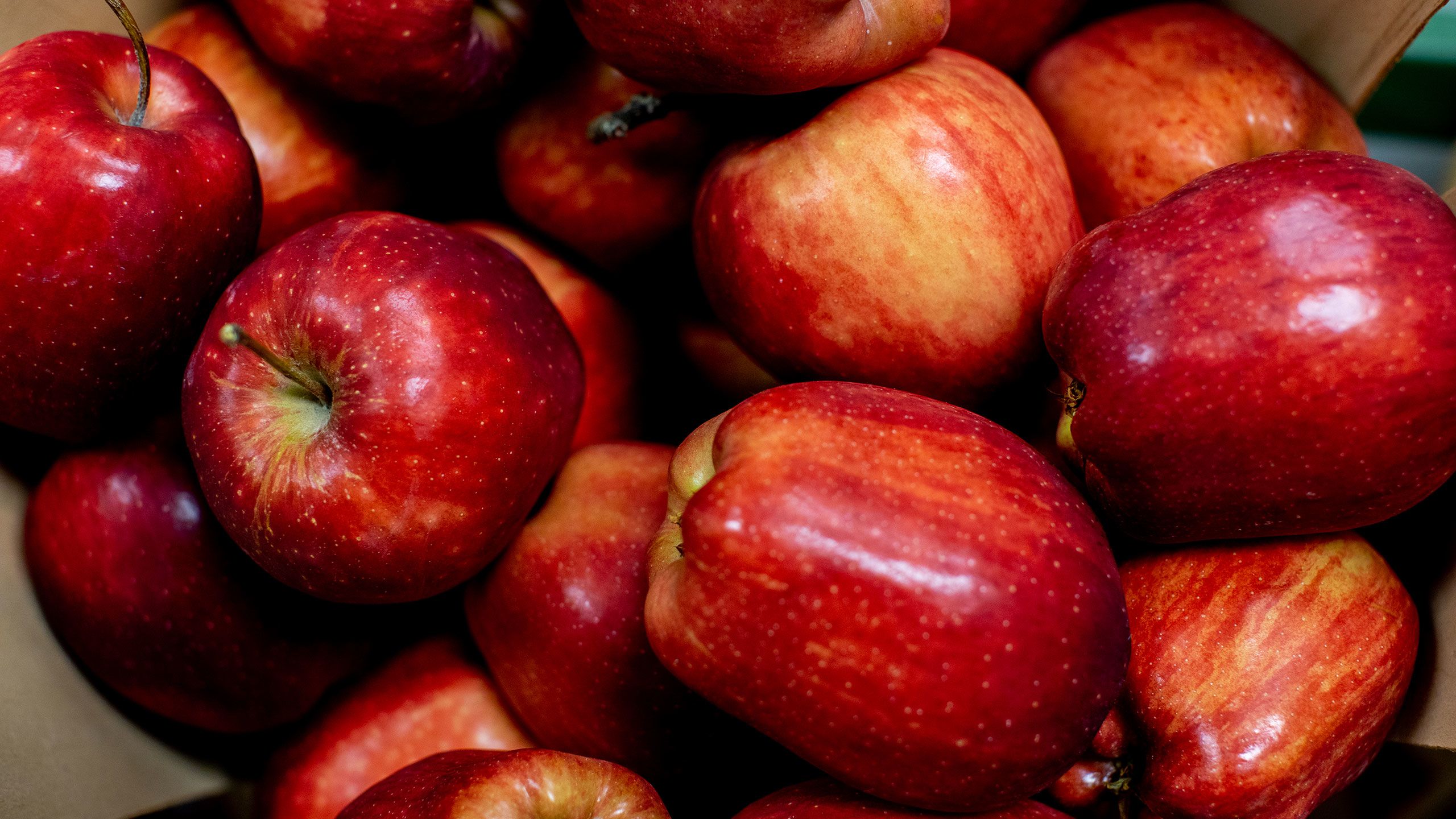
“Food insecurity is associated with reduced academic performance and lower rates of degree completion. At UH, we believe sharp minds are powered by healthy bodies,” said Richard Walker, UH vice president for student affairs and enrollment services. “We are committed to supporting not just the academic needs of our students, but even their most basic needs, including proper nutrition for those who are struggling.”
Cougar Cupboard is located on the first floor of the Campus Recreation and Wellness Center in UH Wellness and is stocked full of fresh fruits and vegetables, frozen and refrigerated foods and dry goods. Students can receive up to 30 lbs. of free groceries every week from Cougar Cupboard (or one of the other 14 Food for Change markets in Houston). To utilize the pantry, a student must attend a one-time market orientation hosted by Cougar Cupboard staff and complete a short application for the Houston Food Bank’s food scholarship program.
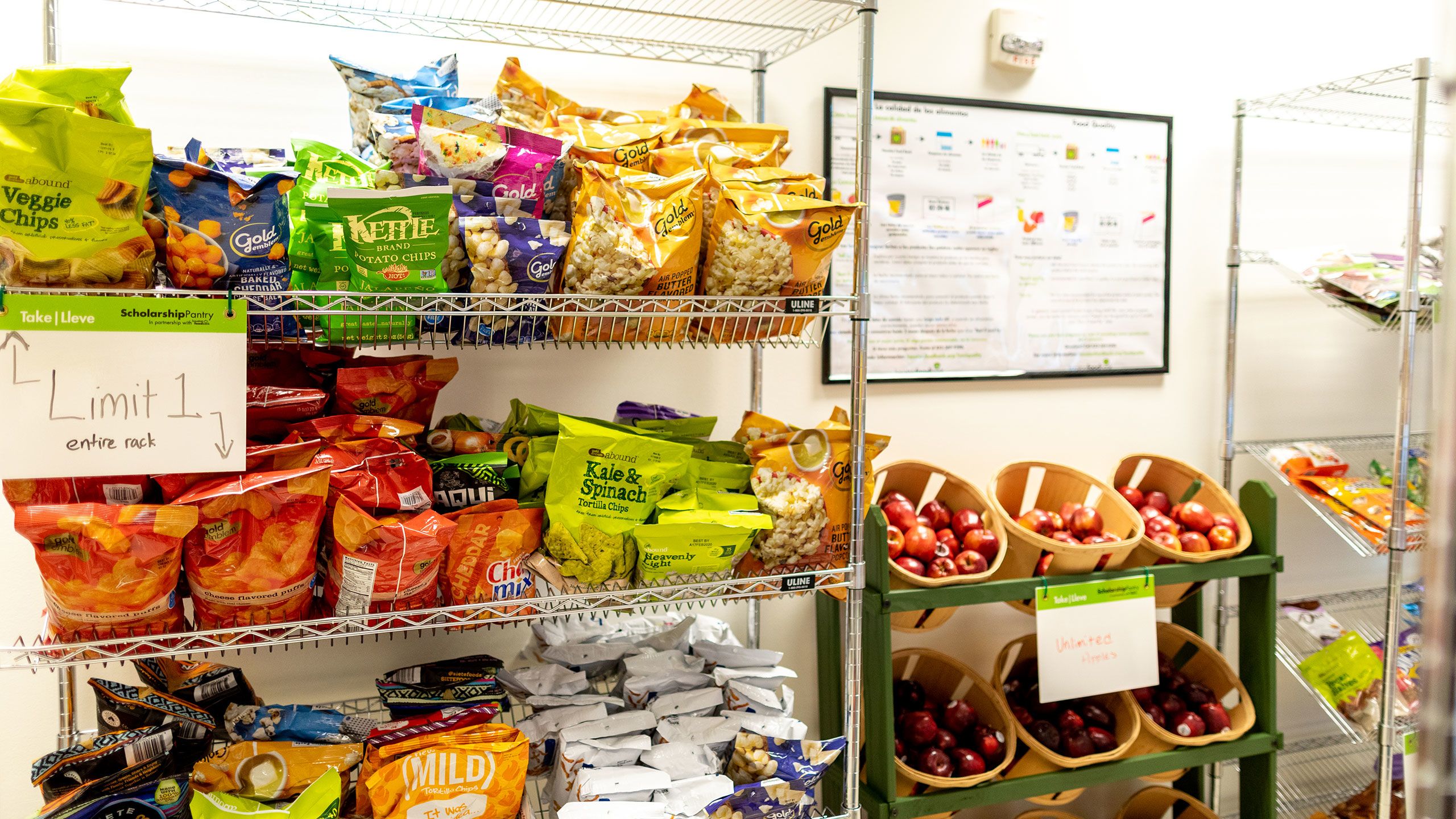
“We get deliveries from the Houston Food Bank every week, so our shelves are consistently stocked and available to students on a first-come, first-served basis,” said Reuben Parrish, assistant director for health education at UH Wellness. “It’s our hope that by eliminating the barrier to healthy food options, our students will thrive in the classroom.”
Making a Difference
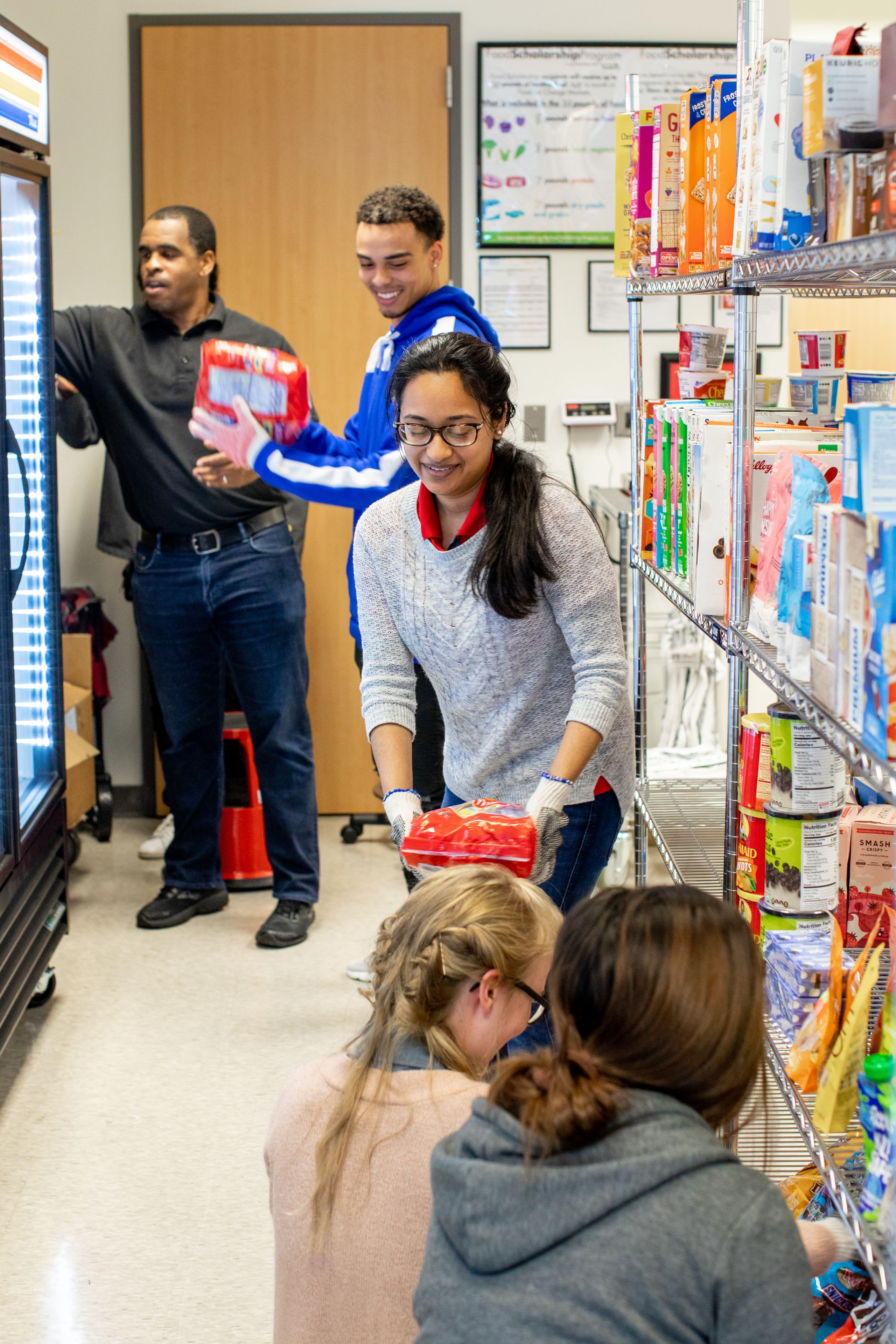
While statistics on food insecure college students can vary greatly, the Center for Law and Social Policy estimated that between 20% to 33% of students at four-year colleges experience food insecurity. Cupboard customer Vaishnavi Dusi, a UH graduate student working on her master’s degree in curriculum & instruction, knows what it’s like to live on a limited budget while balancing the rigors of college.
“Your professor says you have to buy this access code for $100 or your car breaks down or rent goes up. It’s nice to not have to worry about where your food is coming from, too,” she said.
Dusi isn’t just a customer, she’s also a pantry employee with a hand in developing educational information for orientation. Her ability to identify with other students who are struggling financially helps to lessen the possible stigma associated with visiting a free food pantry.
“We do want to take away the stigma, and I stress that during orientation. I know what it’s like. I’m a student on a limited budget and many of us experience that,” she said. “That resonates with a lot of students.”
Whether students need a boost financially with free food or just a more innovative and convenient way to have it delivered, these new additions to campus have made food more accessible for everyone.
Now, in the parting words of a Starship robot:
"Thank you. Have a nice day."
